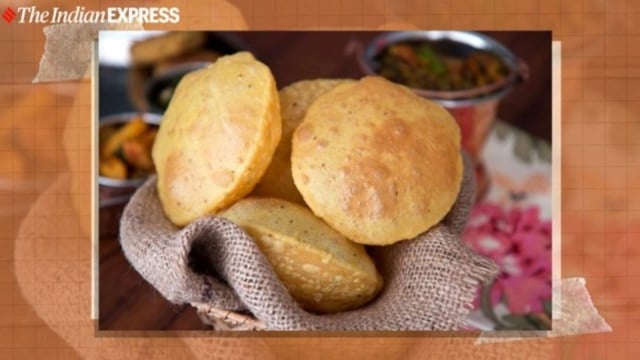- India
- International
North Indian diet high in salt, phosphorus, low in potassium and protein: Why this PGIMER study is a red flag
Experts point to imbalance of key nutrients and call for dietary discipline
 Excessive salt consumption is believed to be a significant trigger of hypertension.(Representative Photo/File)
Excessive salt consumption is believed to be a significant trigger of hypertension.(Representative Photo/File)If you are contemplating butter naan, dal makhni or some chicken do pyaaza this weekend or are a big fan of North Indian cuisine, then you may just be over-consuming salt and phosphorus and could be worsening your hypertension and other co-morbidities.
A study by PGIMER, Chandigarh, and The George Institute for Global Health, India, which tracked the dietary habits of North Indians, found that they consumed a higher-than-recommended intake of salt and phosphorus and were low on protein and potassium. Published in the journal Frontiers in Nutrition, the cross-sectional study included more than 400 subjects, healthy adults and adults with chronic kidney disease (CKD). This is the first study to provide a comprehensive assessment of the intake of multiple nutrients by the north Indian population.
THE STUDY FLAGS EXCESSES
Dr Ashok Yadav, Associate Professor, Experimental Medicine and Biotechnology, PGIMER, Chandigarh, and one of the study’s lead investigators, says they analysed sodium, protein, potassium and phosphorus intakes in urine samples. The test subjects comprised men and women with varying body mass indices, blood pressure and abdominal obesity. “WHO guidelines recommend a daily dietary sodium intake of two grams (corresponding to five grams of salt), but 65 per cent consume eight grams daily,” says Dr Yadav.
Excessive salt consumption is believed to be a significant trigger of hypertension. As sodium levels go up, the body holds on to water to dilute them. This increases both the amount of fluid surrounding the cells and the volume of blood. Increased blood volume means more work for the heart, leading to high blood pressure, heart attack, and stroke. That’s the reason cardiologists advise patients to avoid salt-rich food, pickles, sauces, processed cheese, frozen meals and most importantly table salt.
Similarly while the recommended dietary allowance for phosphorus is 7,000 micrograms a day, the study found that the mean intake was above recommended levels. Extra phosphorus will draw calcium out of your bones, weakening them. High phosphorus and calcium levels also lead to dangerous calcium deposits in blood vessels, lungs, eyes and heart. Over time this can lead to increased risk of heart attack, stroke or death.

Therefore, advises Dr Yadav, choose natural foods like fish, pulses, milk and milk products instead of processed foods that have phosphorus added to them, like canned sodas.
WHAT THE DIET LACKS?
WHO recommends at least 3.50 grams of potassium intake but, according to Dr Yadav, a striking find was the low potassium intake in the study population. Nuts, green vegetables and fruits like kiwi and banana are the primary sources of potassium in the diet. “But since the meals have low dietary diversity, the imbalance shows,” explains Dr Yadav.
Another shocker was the low protein intake by healthy individuals, considering there are meaty menus in North Indian spreads. Against the 0.8 to 1 gm per kg body weight requirement, protein intake hovered around 0.78 g per kg of body weight. The usual protein intake in predominantly vegetarian homes was found to be around 39-57 gm per day. Though men had a higher nutrient intake as compared to women, their overall dietary habits were not satisfactory.
Says Dr Nancy Sahni, HOD, Dietetics, PGIMER, Chandigarh, who is also part of this study, “Protein is a building block of our bodies. If it is not up to the optimum level, sarcopenia (muscle wasting) may set in. The best protein sources are milk and milk products, eggs, fish, pulses, legumes, nuts, and oil seeds. For a normal being able to eat everything, judicious food combinations for enhancing the quality and quantity of protein is required rather than supplements.”
The study may have confined itself to assessing protein, sodium, potassium and phosphorus but given their imbalance, it is quite clear that the North Indian diet makes for quite a lopsided food pyramid. An unhealthy diet, coupled with lack of physical activity and use of alcohol and smoking, is the reason why our disease burden of non-communicable diseases keeps on increasing.
Apr 04: Latest News
- 01
- 02
- 03
- 04
- 05





























